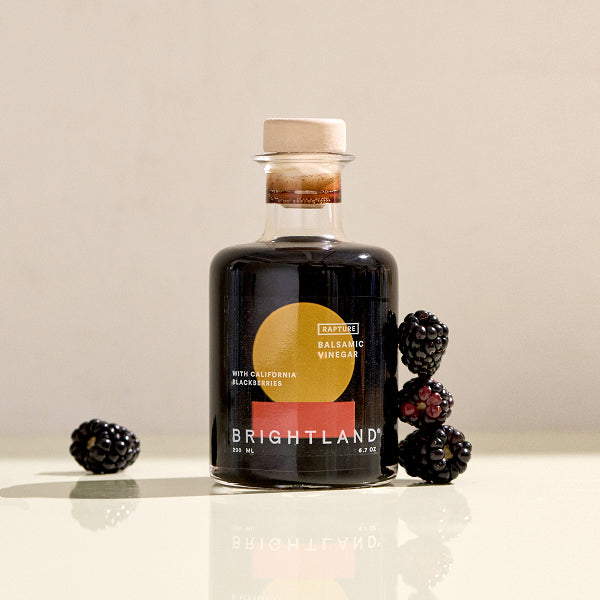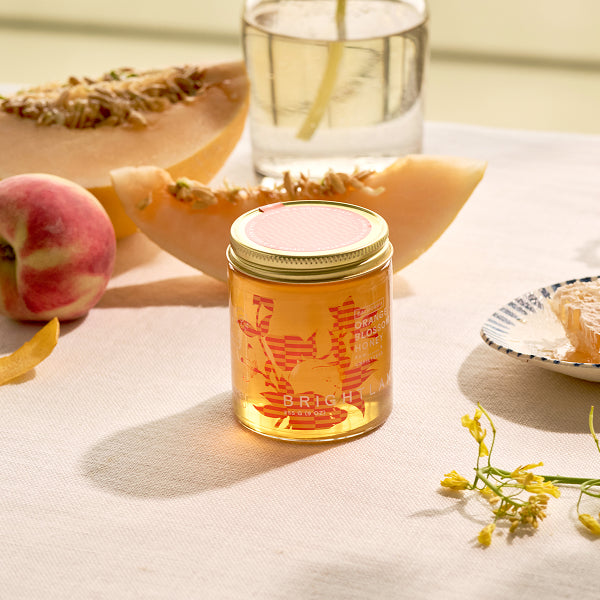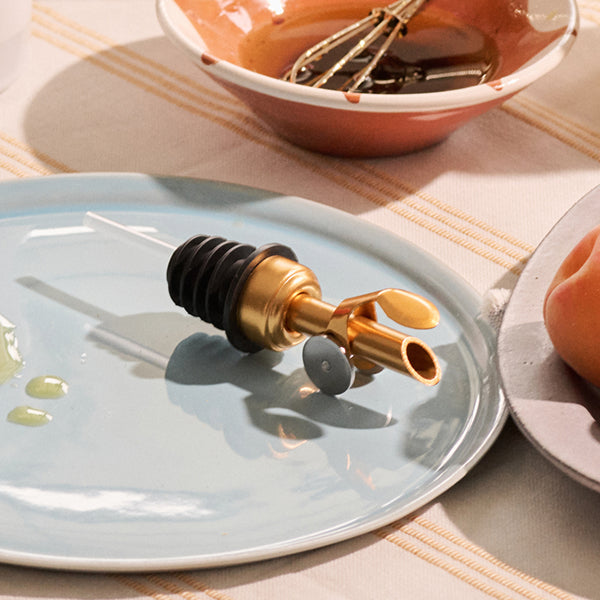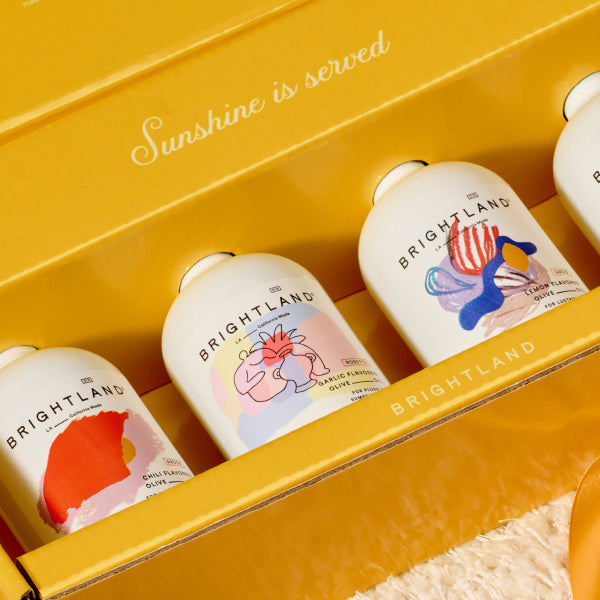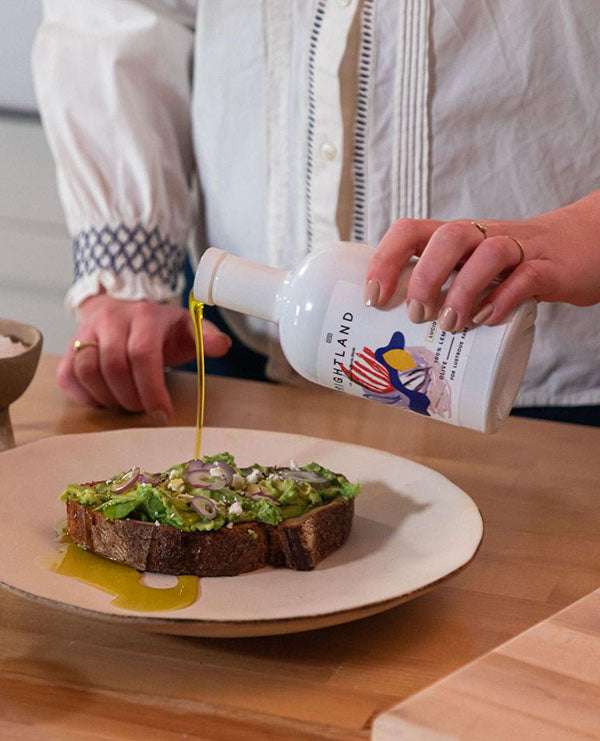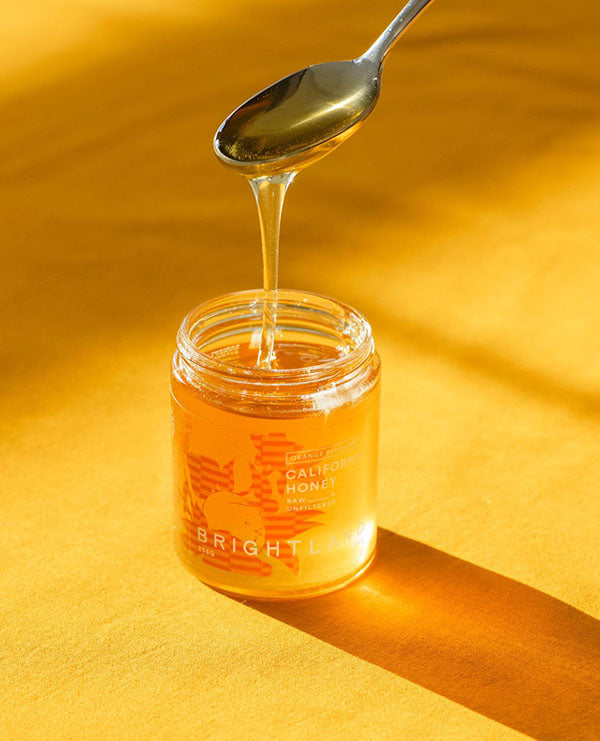[open type="rte"]
Navigating your olive oil options can be overwhelming, and one of the most confusing distinctions is between virgin vs. extra virgin olive oil. While the names may sound very similar, each type of olive oil has separate standards that distinguish them from each other. Read on to learn the differences between virgin vs. extra virgin olive oil (EVOO) and discover which one you should buy.
[close type="rte"][open type="images" small="true"]

[close type="images"][open type="rte"]
[close type="rte"][open type="rte"]
Virgin vs. Extra Virgin Olive Oil Acidity Differences
From a technical standpoint, acidity is one of the most important criteria for distinguishing extra virgin olive oil from virgin olive oil. Olive oil is considered extra virgin if it has a free fatty acid level of 0.8 percent or lower. Virgin olive oil has a fatty acid level of between 0.8 percent and 2.0 percent. Basically, every olive oil starts with an acidity level of zero, and then acidity rises with time and other factors.
Harvesting time is critical for creating high quality olive oil. If the fruit is left on the tree too long and harvested too late, free fatty acids will begin to develop and the olive will not yield extra virgin oil. The same thing will happen if the olives are left to sit too long before they are pressed. Thus, time is of the essence if you want to get extra virgin olive oil from the fruit.
[close type="rte"][open type="images" count="1"]

[close type="images"][open type="rte"]
At Brightland, we harvest all of our olives early in the season to maximize our extra virgin oil yield. Furthermore, all olives are pressed within 90 minutes of harvest (which is very quick), further increasing the extra virgin olive oil yield. As a result of how quickly we move, our extra virgin olive oil tests way beyond industry standards for free fatty acid content, so you know that you are getting an exceptional olive oil.
To learn more about olive oil acidity and what the varying levels mean, check out our complete guide to olive oil acidity, which goes way more in depth.
[close type="rte"][open type="rte"]
The Differences Between Virgin vs. Extra Virgin Olive Oil
Besides acidity, there are other important differences between virgin and extra virgin olive oil. First of all, extra virgin olive oil is exclusively produced via cold press mechanical means (so without using chemicals or solvents). However, olive oil that does not meet EVOO criteria may be subjected to additional processing by chemical means in order to make it more palatable and remove unwanted odors, resulting in virgin olive oil.
Virgin olive oil may also be created from blending together some extra virgin olive oil with olive oil that has been processed by these chemical means, resulting in a lower quality blend that still falls within the free fatty acid parameters. The EVOO is mixed in to add some color, flavor and fragrance back into the heavily refined oil, but do not be fooled by this trick. Chemically refined oil blends cannot compare to 100 percent genuine extra virgin olive oil.
As a result of this extra refining process, virgin olive oil is usually light in appearance, weaker in flavor and lighter in fragrance than EVOO. This is because the chemical refining removes the polyphenols and antioxidants that impart these qualities to olive oil. Unfortunately, these same beneficial compounds are also responsible for most of the nutrition benefits of olive oil. Thus, virgin olive oil has less health benefits than extra virgin olive oil.
[close type="rte"][open type="images" count="1"]

[close type="images"][open type="rte"]
Virgin vs. Extra Virgin Olive Oil: Which to Choose?
The decision is clear: Extra virgin olive oil offers superior taste, smell and nutritional benefits when compared to virgin olive oil. Because the standards for virgin olive oil have more variables than they do for EVOO, you never really know what you are getting in a bottle of virgin olive oil. Standards for extra virgin olive oil are much more stringent, so you can rest assured knowing that you are getting a high quality product when you choose EVOO over virgin olive oil.
If you want to try high quality extra virgin olive oil, consider our olive oil set, which features two distinct extra virgin olive oils that will go with any recipe. We also offer a selection of flavored olive oils — including chili infused oil and lemon olive oil.
[close type="rte"]



